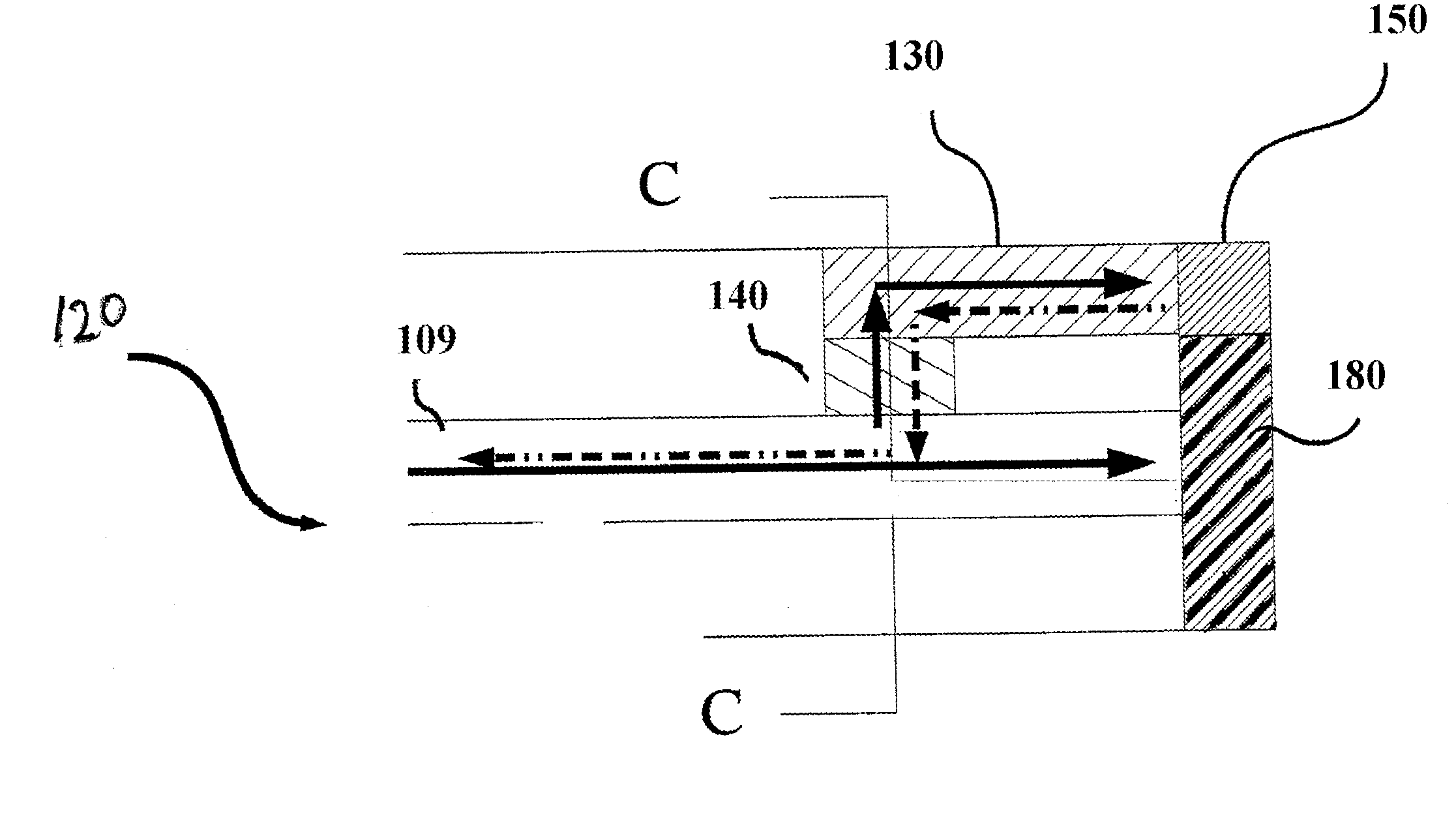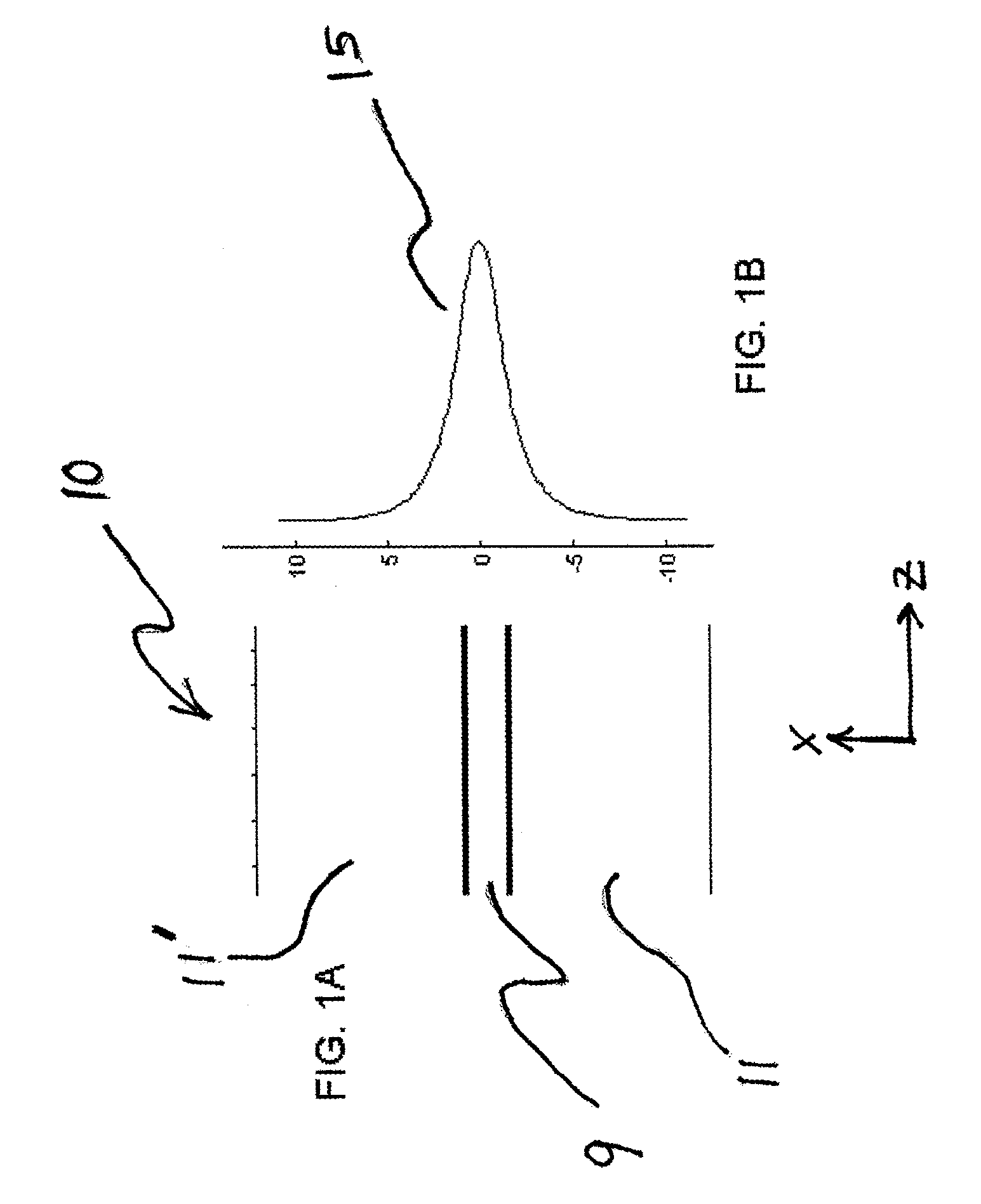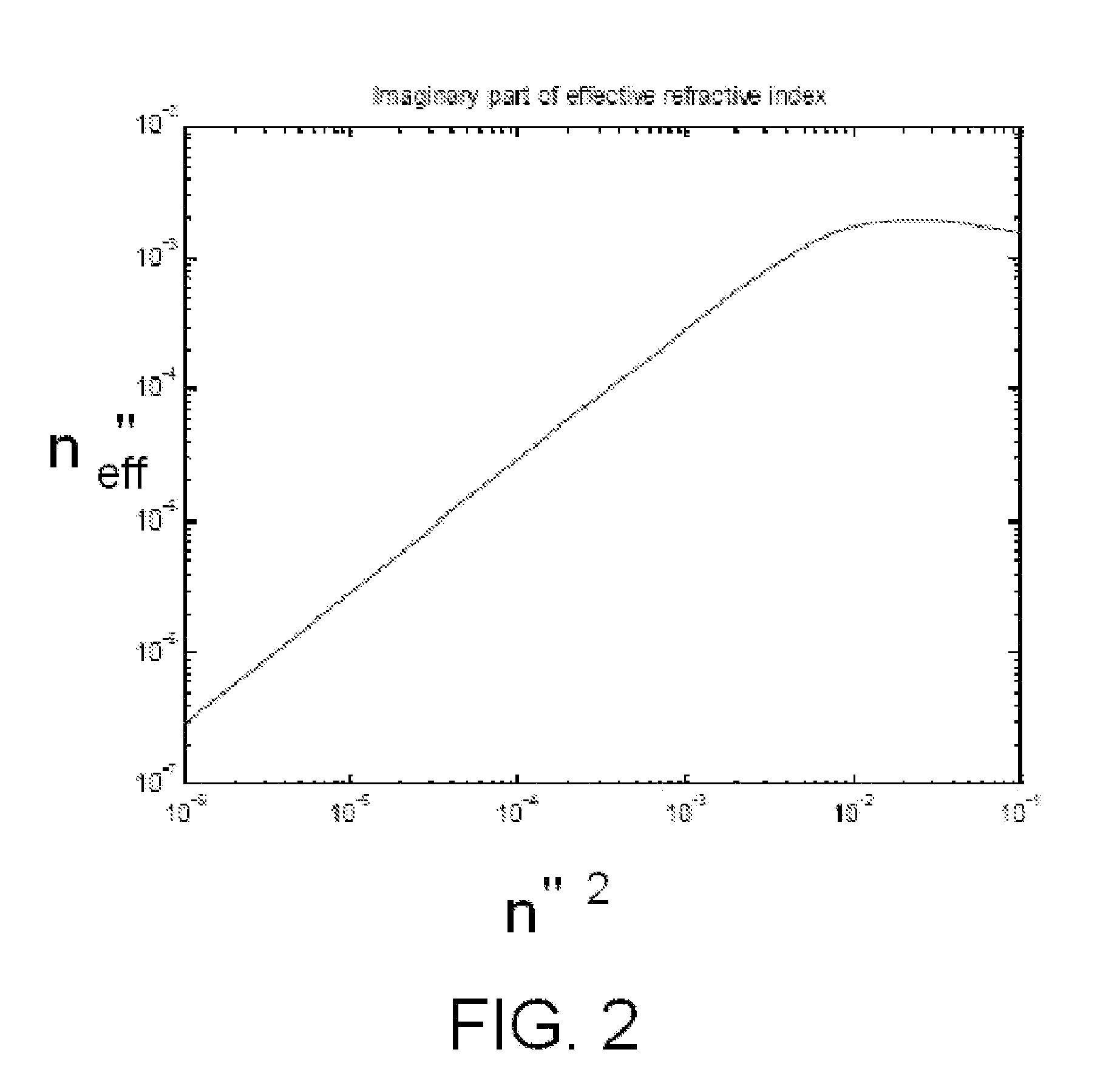Blood Oxygenation Sensor
a blood oxygenation sensor and sensor technology, applied in the field of invivo optical measurement of blood chemistry, can solve problems such as several limitations, and achieve the effect of higher sensitivity
- Summary
- Abstract
- Description
- Claims
- Application Information
AI Technical Summary
Benefits of technology
Problems solved by technology
Method used
Image
Examples
Embodiment Construction
[0032] Referring to FIGS. 1 through 13, wherein like reference numerals refer to like components in the various views, there is illustrated therein a new and improved blood oxygenation sensor, generally denominated 100 herein.
[0033] Before providing details on the construction and methods of using the various embodiments of the invention, theoretical consideration regarding the operative principles of such device will be described.
[0034] A step index optical fiber / dielectric waveguide has, basically, two regions with different refractive indexes: core and cladding. The core has a refractive index larger than the cladding region surrounding it. Light waves are guided throughout the waveguide due to a phenomenon known as total internal reflection. Remarkably, that propagating field is not spatially limited only to the core, but also extends into the cladding and exponentially decays with the distance from the core. This exponentially decaying field is known as an evanescent field. T...
PUM
 Login to View More
Login to View More Abstract
Description
Claims
Application Information
 Login to View More
Login to View More - R&D
- Intellectual Property
- Life Sciences
- Materials
- Tech Scout
- Unparalleled Data Quality
- Higher Quality Content
- 60% Fewer Hallucinations
Browse by: Latest US Patents, China's latest patents, Technical Efficacy Thesaurus, Application Domain, Technology Topic, Popular Technical Reports.
© 2025 PatSnap. All rights reserved.Legal|Privacy policy|Modern Slavery Act Transparency Statement|Sitemap|About US| Contact US: help@patsnap.com



